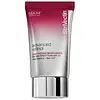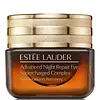What's inside
What's inside
 Key Ingredients
Key Ingredients

 Benefits
Benefits

 Concerns
Concerns

 Ingredients Side-by-side
Ingredients Side-by-side

Butyl Methoxydibenzoylmethane 2.7%
UV AbsorberHomosalate 6.3%
Skin ConditioningEthylhexyl Salicylate 4.05%
UV AbsorberOctocrylene 9%
UV AbsorberWater
Skin ConditioningPropanediol
SolventIsononyl Isononanoate
EmollientMyristyl Nicotinate
Skin ConditioningGlycerin
HumectantCetearyl Alcohol
EmollientEthylhexyl Isononanoate
EmollientCoco-Glucoside
CleansingPotassium Cetyl Phosphate
EmulsifyingPrunus Persica Flower Extract
MoisturisingNicotiana Benthamiana Hexapeptide-40 Sh-Polypeptide-76
Skin ConditioningRetinol
Skin ConditioningBeta-Glucan
Skin ConditioningZingiber Officinale Root Extract
MaskingBisabolol
MaskingBeta-Sitosterol
Emulsion StabilisingHibiscus Esculentus Fruit Extract
Skin ConditioningOryza Sativa Germ Extract
EmollientGlycine Soja Extract
Skin ConditioningOryza Sativa Extract
AbsorbentDimethicone
EmollientBacillus/Sea Salt Ferment Filtrate
Skin ConditioningSodium Hyaluronate
HumectantGluconolactone
Skin ConditioningPolyglyceryl-3 Diisostearate
EmulsifyingGlycine Soja Oil
EmollientAscorbyl Palmitate
AntioxidantAscorbic Acid
AntioxidantTocopheryl Acetate
AntioxidantPolysorbate 20
EmulsifyingErythritol
HumectantGlucose
HumectantPentylene Glycol
Skin ConditioningButylene Glycol
HumectantMethyl Methacrylate/Glycol Dimethacrylate Crosspolymer
Caprylyl Glycol
EmollientSodium Acrylates Copolymer
Lecithin
Emollient1,2-Hexanediol
Skin ConditioningAcrylates/C10-30 Alkyl Acrylate Crosspolymer
Emulsion StabilisingTetrasodium Glutamate Diacetate
Caprylhydroxamic Acid
Polysilicone-11
Propyl Gallate
AntioxidantParfum
MaskingAminomethyl Propanol
BufferingDisodium EDTA
Xanthan Gum
EmulsifyingPhenethyl Alcohol
MaskingCitric Acid
BufferingBHT
AntioxidantSodium Benzoate
MaskingPotassium Sorbate
PreservativeAlpha-Isomethyl Ionone
PerfumingButyl Methoxydibenzoylmethane 2.7%, Homosalate 6.3%, Ethylhexyl Salicylate 4.05%, Octocrylene 9%, Water, Propanediol, Isononyl Isononanoate, Myristyl Nicotinate, Glycerin, Cetearyl Alcohol, Ethylhexyl Isononanoate, Coco-Glucoside, Potassium Cetyl Phosphate, Prunus Persica Flower Extract, Nicotiana Benthamiana Hexapeptide-40 Sh-Polypeptide-76, Retinol, Beta-Glucan, Zingiber Officinale Root Extract, Bisabolol, Beta-Sitosterol, Hibiscus Esculentus Fruit Extract, Oryza Sativa Germ Extract, Glycine Soja Extract, Oryza Sativa Extract, Dimethicone, Bacillus/Sea Salt Ferment Filtrate, Sodium Hyaluronate, Gluconolactone, Polyglyceryl-3 Diisostearate, Glycine Soja Oil, Ascorbyl Palmitate, Ascorbic Acid, Tocopheryl Acetate, Polysorbate 20, Erythritol, Glucose, Pentylene Glycol, Butylene Glycol, Methyl Methacrylate/Glycol Dimethacrylate Crosspolymer, Caprylyl Glycol, Sodium Acrylates Copolymer, Lecithin, 1,2-Hexanediol, Acrylates/C10-30 Alkyl Acrylate Crosspolymer, Tetrasodium Glutamate Diacetate, Caprylhydroxamic Acid, Polysilicone-11, Propyl Gallate, Parfum, Aminomethyl Propanol, Disodium EDTA, Xanthan Gum, Phenethyl Alcohol, Citric Acid, BHT, Sodium Benzoate, Potassium Sorbate, Alpha-Isomethyl Ionone
Methyl Trimethicone
Skin ConditioningWater
Skin ConditioningBifida Ferment Lysate
Skin ConditioningDimethicone
EmollientDimethicone/Vinyl Dimethicone Crosspolymer
Skin ConditioningPropanediol
SolventSucrose
HumectantPetrolatum
EmollientPolysorbate 40
EmulsifyingTrehalose
HumectantAlgae Extract
EmollientMorus Bombycis Root Extract
Skin ConditioningScutellaria Baicalensis Root Extract
AstringentLactobacillus Ferment
Skin ConditioningTriticum Vulgare Germ Extract
Skin ConditioningAcrylamide/Sodium Acryloyldimethyltaurate Copolymer
Emulsion StabilisingBetula Alba Bud Extract
Skin ConditioningHydrolyzed Algin
Poria Cocos Sclerotium Extract
AstringentJojoba Alcohol
EmollientEthylhexylglycerin
Skin ConditioningGlycine Soja Seed Extract
Skin ConditioningIsopropyl Jojobate
EmollientJojoba Esters
EmollientIsohexadecane
EmollientYeast Extract
Skin ConditioningHydrogenated Lecithin
EmulsifyingHordeum Vulgare Extract
EmollientPEG/PPG-18/18 Dimethicone
EmulsifyingCholesterol
EmollientAnthemis Nobilis Flower Extract
MaskingTocopheryl Acetate
AntioxidantSodium Rna
Skin ConditioningCaffeine
Skin ConditioningPolysorbate 80
EmulsifyingCaprylyl Glycol
EmollientPhytosphingosine
Skin ConditioningSqualane
EmollientPotassium Sulfate
Sodium Hyaluronate
HumectantAcrylates/C10-30 Alkyl Acrylate Crosspolymer
Emulsion StabilisingTripeptide-32
Skin ConditioningButylene Glycol
HumectantTromethamine
BufferingDisodium EDTA
BHT
AntioxidantPhenoxyethanol
PreservativeIron Oxides
Methyl Trimethicone, Water, Bifida Ferment Lysate, Dimethicone, Dimethicone/Vinyl Dimethicone Crosspolymer, Propanediol, Sucrose, Petrolatum, Polysorbate 40, Trehalose, Algae Extract, Morus Bombycis Root Extract, Scutellaria Baicalensis Root Extract, Lactobacillus Ferment, Triticum Vulgare Germ Extract, Acrylamide/Sodium Acryloyldimethyltaurate Copolymer, Betula Alba Bud Extract, Hydrolyzed Algin, Poria Cocos Sclerotium Extract, Jojoba Alcohol, Ethylhexylglycerin, Glycine Soja Seed Extract, Isopropyl Jojobate, Jojoba Esters, Isohexadecane, Yeast Extract, Hydrogenated Lecithin, Hordeum Vulgare Extract, PEG/PPG-18/18 Dimethicone, Cholesterol, Anthemis Nobilis Flower Extract, Tocopheryl Acetate, Sodium Rna, Caffeine, Polysorbate 80, Caprylyl Glycol, Phytosphingosine, Squalane, Potassium Sulfate, Sodium Hyaluronate, Acrylates/C10-30 Alkyl Acrylate Crosspolymer, Tripeptide-32, Butylene Glycol, Tromethamine, Disodium EDTA, BHT, Phenoxyethanol, Iron Oxides
 Reviews
Reviews

Alternatives
Ingredients Explained
These ingredients are found in both products.
Ingredients higher up in an ingredient list are typically present in a larger amount.
Acrylates/C10-30 Alkyl Acrylate Crosspolymer is a synthetic polymer. It is used to thicken and improve the texture of products. Due to its properties, it can prevent water and oil ingredients from separating.
BHT is a synthetic antioxidant and preservative.
As an antioxidant, it helps your body fight off free-radicals. Free-radicals are molecules that may damage your skin cells.
As a preservative, it is used to stabilize products and prevent them from degrading. Specifically, BHT prevents degradation from oxidation.
The concerns related to BHT come from oral studies; this ingredient is currently allowed for use by both the FDA and EU.
However, it was recently restricted for use in the UK as of April 2024.
Learn more about BHTButylene Glycol (or BG) is used within cosmetic products for a few different reasons:
Overall, Butylene Glycol is a safe and well-rounded ingredient that works well with other ingredients.
Though this ingredient works well with most skin types, some people with sensitive skin may experience a reaction such as allergic rashes, closed comedones, or itchiness.
Learn more about Butylene GlycolCaprylyl Glycol is a humectant and emollient, meaning it attracts and preserves moisture.
It is a common ingredient in many products, especially those designed to hydrate skin. The primary benefits are retaining moisture, skin softening, and promoting a healthy skin barrier.
Though Caprylyl Glycol is an alcohol derived from fatty acids, it is not the kind that can dry out skin.
This ingredient is also used as a preservative to extend the life of products. It has slight antimicrobial properties.
Learn more about Caprylyl GlycolDimethicone is a type of synthetic silicone created from natural materials such as quartz.
What it does:
Dimethicone comes in different viscosities:
Depending on the viscosity, dimethicone has different properties.
Ingredients lists don't always show which type is used, so we recommend reaching out to the brand if you have questions about the viscosity.
This ingredient is unlikely to cause irritation because it does not get absorbed into skin. However, people with silicone allergies should be careful about using this ingredient.
Note: Dimethicone may contribute to pilling. This is because it is not oil or water soluble, so pilling may occur when layered with products. When mixed with heavy oils in a formula, the outcome is also quite greasy.
Learn more about DimethiconeDisodium EDTA plays a role in making products more stable by aiding other preservatives.
It is a chelating agent, meaning it neutralizes metal ions that may be found in a product.
Disodium EDTA is a salt of edetic acid and is found to be safe in cosmetic ingredients.
Learn more about Disodium EDTAPropanediol is an all-star ingredient. It softens, hydrates, and smooths the skin.
It’s often used to:
Propanediol is not likely to cause sensitivity and considered safe to use. It is derived from corn or petroleum with a clear color and no scent.
Learn more about PropanediolSodium Hyaluronate is hyaluronic acid's salt form. It is commonly derived from the sodium salt of hyaluronic acid.
Like hyaluronic acid, it is great at holding water and acts as a humectant. This makes it a great skin hydrating ingredient.
Sodium Hyaluronate is naturally occurring in our bodies and is mostly found in eye fluid and joints.
These are some other common types of Hyaluronic Acid:
Learn more about Sodium HyaluronateTocopheryl Acetate is AKA Vitamin E. It is an antioxidant and protects your skin from free radicals. Free radicals damage the skin by breaking down collagen.
One study found using Tocopheryl Acetate with Vitamin C decreased the number of sunburned cells.
Tocopheryl Acetate is commonly found in both skincare and dietary supplements.
Learn more about Tocopheryl AcetateWater. It's the most common cosmetic ingredient of all. You'll usually see it at the top of ingredient lists, meaning that it makes up the largest part of the product.
So why is it so popular? Water most often acts as a solvent - this means that it helps dissolve other ingredients into the formulation.
You'll also recognize water as that liquid we all need to stay alive. If you see this, drink a glass of water. Stay hydrated!
Learn more about Water